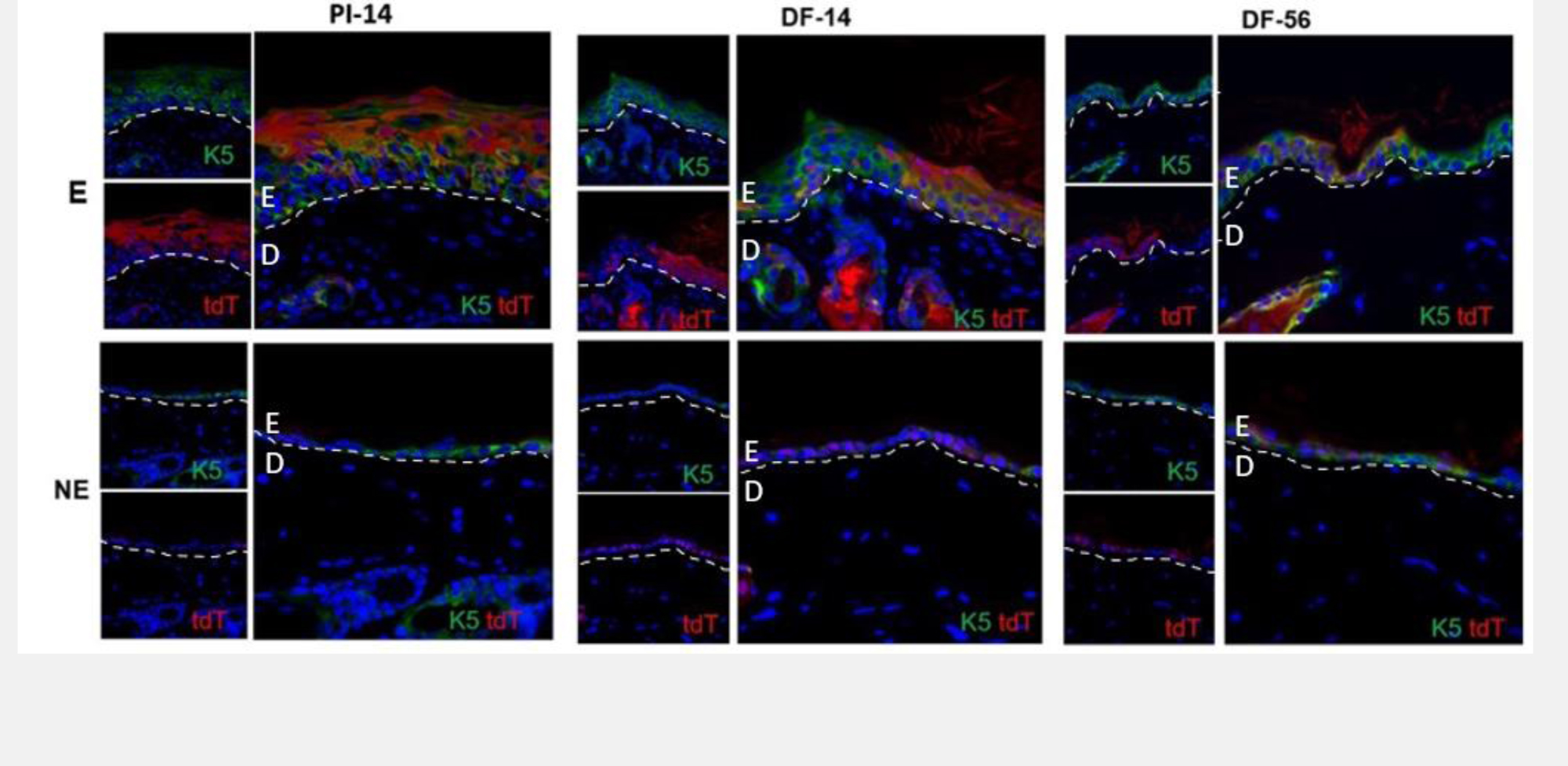A History of Mechanical Tension Depletes Lgr6+ Epidermal Stem Cells
Ainsley L. Taylor, Yingchao Xue, Luis Garza, Sashank K. Reddy
Johns Hopkins Medicine, Baltimore, MD
BACKGROUND: Recent research found the epidermal Lgr6 stem cell population to be progressively depleted under mechanical tension, with a paralleled increase in the Lgr6 descendant population. This study aims to determine if there is a reversal of tension-induced skin growth characteristics, specifically if the Lgr6 stem cell population recovers after tension is removed. Our results will guide future research in therapeutic interventions for optimal skin recovery following tension, such as seen with bariatric surgery and tissue expanders.
METHODS: Genetic Lgr6-EGFP-Cre-ERT2;tdTomato mice (EGFP=Lgr6, tdT=Lgr6 descendants) underwent controlled expansion (E) of the back skin. A tissue expander was expanded over 10 days, rested for 14 days, then deflated at post-injection day 14 (PI-14) or deflation day zero (DF-0). Skin over the expander was harvested. Cell populations were defined using immunofluorescence and quantified through ImageJ. Control mice underwent expander surgery but did not undergo saline expansion (non-expanded, NE). NE and E mice (n=3 each) were compared for PI-14, DF-14, and DF-56. We used two-tailed t-test with alpha set at 0.05.
RESULTS: Relative expression of EGFP decreased from NE to both DF-14 (p=0.0474) and DF-56 (p=0.0477), while relative expression of tdT increased from NE to DF-56 (p=0.0125). EGFP+ cells decreased from NE to PI-14, DF-14, and DF-56 (p=0.0114 for all), while tdT+ cells increased from NE to PI-14, DF-14, and DF-56 (p=0.0086, p=0.0133, p=0.00002). Proliferating cells (Ki67+) increased from NE to PI-14, DF-14, and DF-56 (p=0.00007, p=0.00001, p=0.0417), but decreased from DF-14 to DF-56 (p=0.0278). Of the proliferating cell population, the [Ki67+tdT+] population increased from NE to DF-56 (p=0.0002). Cytokeratin 5 (K5) relative expression increased from NE to PI-14, DF-14, and DF-56 (p=0.0109, p<0.00001, p<0.00001). The number of epidermal keratinocyte layers increased from NE to PI-14 and DF-14 (p=0.0002, p=0.0003), with no difference between NE and DF-56 (p=0.1567).
CONCLUSIONS: The epidermal Lgr6 stem cell population remained severely depleted following discontinuation of mechanical tension. Conversely, both the Lgr6 descendent population and K5 stem cell expression increased both under tension and following release of tension. A prolonged history of discontinued tension revealed the majority of the proliferating cell population was from Lgr6 progeny. Together, these observations suggest that in skin with a history of tension: (1) the Lgr6 population is permanently depleted, (2) the majority of the epidermis will be from Lgr6 progeny, and (3) Lgr6 progeny and K5 stem cells will be preferentially and progressively activated over Lgr6 stem cells to maintain the epidermis.
Back to 2022 Abstracts

